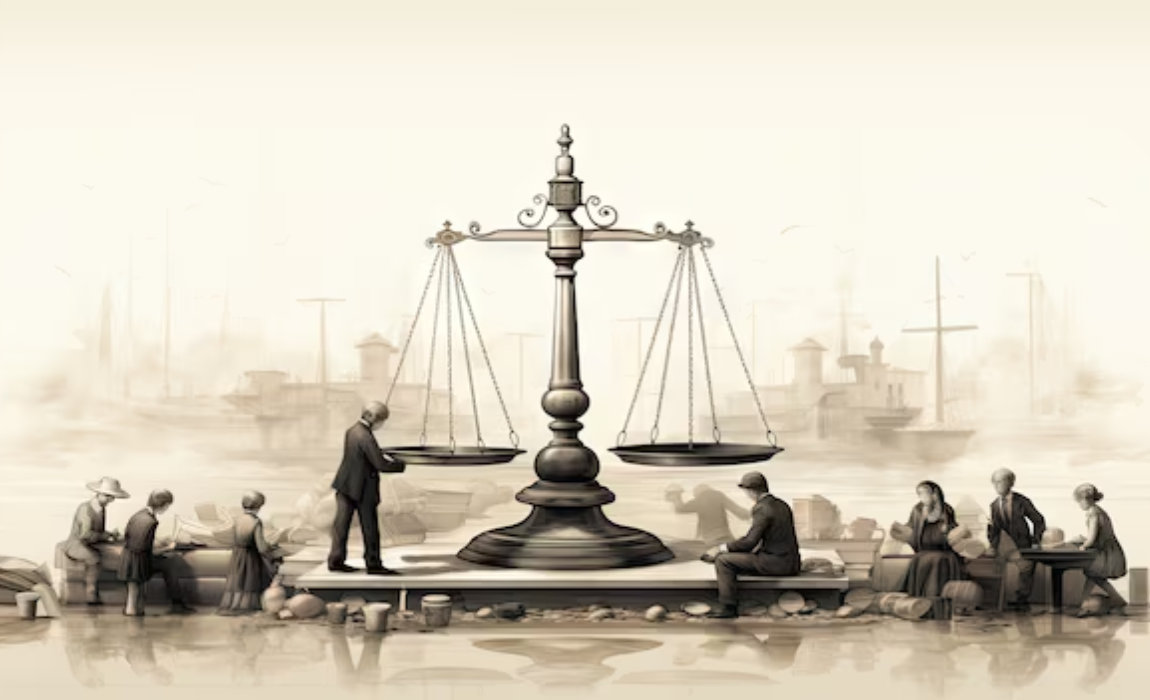
"Rule of Law in India: Dicey’s Legacy and Its Contemporary Relevance"
The doctrine of Rule of Law, first propounded by A.V. Dicey in his seminal 1885 work “Introduction to the Study of the Law of the Constitution”, remains one of the most enduring foundations of modern constitutional democracies. It has travelled through centuries, crossing borders and adapting to various legal cultures. In India, though rooted in a written Constitution rather than unwritten conventions like the UK, the Rule of Law has become both a constitutional precept and a moral imperative. As the country navigates turbulent legal and political waters in 2025, it is necessary to revisit Dicey’s legacy and assess its continuing relevance in Indian jurisprudence.
Dicey’s Doctrine: The Three Pillars
Dicey’s Rule of Law rests on three pillars: (1) Supremacy of law—no man is above the law;
(2) Equality before the law—every person is subject to the ordinary law of the land administered by ordinary courts; and (3) Predominance of legal spirit—constitutional principles arise from judicial decisions securing individual liberties.
While India’s Constitution doesn’t explicitly use the phrase “Rule of Law”, it is deeply embedded in its fabric. The Preamble promises justice and equality; Article 14 guarantees equality before the law; Article 21 ensures that no person shall be deprived of life or personal liberty except according to procedure established by law. Collectively, these provisions reflect Dicey’s foundational principles.
Judicial Interpretation: Building Constitutional Rule of Law
The Indian judiciary has played a central role in transforming Rule of Law from a philosophical ideal into a living constitutional doctrine. In Kesavananda Bharati v. State of Kerala (1973), the Supreme Court held that Rule of Law is part of the basic structure of the Constitution. This means even Parliament cannot enact laws that violate this doctrine.
Further, in Maneka Gandhi v. Union of India (1978), the Court expanded the interpretation of “procedure established by law” to mean a just, fair, and reasonable procedure—ensuring procedural safeguards and substantive justice. In doing so, the Court married the Rule of Law with the right to personal liberty under Article 21.
The judiciary has continued this legacy in recent years. In Sabarimala Temple Entry case (2018), Navtej Singh Johar v. Union of India (2018), and Puttaswamy v. Union of India (2017) (right to privacy), the Court reaffirmed that laws and state actions must be constitutionally valid and grounded in equality, dignity, and fairness.
In 2024, the Supreme Court reiterated these principles while striking down arbitrary preventive detention orders in Imtiyaz Ahmed v. State of Uttar Pradesh, holding that even in the interest of national security or public order, executive action must be guided by fairness, not discretion. This judgment reinforced the notion that executive arbitrariness is the antithesis of Rule of Law
Challenges to the Rule of Law Today
Despite constitutional entrenchment, the Rule of Law in India faces serious contemporary challenges. Increasing executive influence over investigative agencies, selective use of sedition and anti-terror laws, and prolonged pre-trial detentions undermine both equality and fairness. Laws such as the Unlawful Activities (Prevention) Act (UAPA), and recent debates over the "deeming" clauses in the Bharatiya Nyaya Sanhita (2023) raise questions about presumption of innocence and procedural fairness.
The recent criticism of the misuse of anti-defection laws to topple state governments—most notably in Maharashtra (2022) and Manipur (2023)—has exposed how constitutional structures can be subverted despite formal legality. In such cases, Dicey’s concern about law being used as a tool of political expediency becomes especially pertinent.
Furthermore, the prolonged pendency of judicial appointments and executive inaction on Collegium recommendations—even in 2025—raises serious concerns about the independence of the judiciary, a core element of the Rule of Law.
Conclusion: Keeping Dicey Alive in Indian Constitutionalism
The Rule of Law, as a concept, is neither Western nor outdated. In India, it has acquired unique dimensions through constitutional text, judicial innovation, and democratic aspiration. Yet its success depends not just on doctrines or judgments, but on institutional integrity, civil liberties, and constant vigilance.
Dicey’s vision remains relevant—not because India follows a Westminster model, but because the idea that law must govern and not arbitrary power is essential to any democracy. As India moves forward under new criminal codes and evolving social dynamics, the Rule of Law must remain more than a slogan. It must be a lived constitutional reality.
